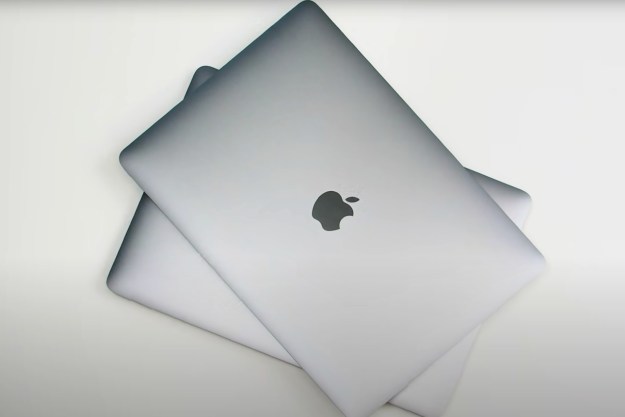In upgrading the MacBook Pro 14 and 16 from the M1 Pro/Max to the M2 Pro/Max, Apple kept almost everything but the processors the same. That’s a good thing, because these are two of the best laptops you can buy and the best MacBooks around.
Apple maintained the same quality in the chassis and displays, retained the best keyboards and touchpads, and didn’t mess with what was already working. But if you’re looking for an incredibly fast laptop with awesome battery life, should you save some money and get the M1 version or splurge for the M2?
Specs and configurations
| Apple MacBook Pro M1 14 and 16 | Apple MacBook Pro M2 14 and 16 | |
| Dimensions | 14: 12.31 inches x 8.71 inches x 0.61 inches 16: 14.01 inches x 9.77 inches x 0.66 inches |
14: 12.31 inches x 8.71 inches x 0.60 inches 16: 14.01 inches x 9.77 inches x 0.66 inches |
| Weight | 14: 3.5 pounds 16: 4.8 pounds |
14: 3.5 pounds 16: 4.8 pounds |
| Processor | Apple M1 Pro Apple M1 Max |
Apple M2 Pro Apple M2 Max |
| Graphics | Integrated | Integrated |
| RAM | 8GB (14-inch) 16GB 32GB 64GB (M1 Max) |
16GB 32GB 64GB 96GB (M2 Max) |
| Display | 14: 14.2-inch 16:10 Liquid Retina XDR 3024 x 1964 16: 16.0-inch 16:10 Liquid Retina XDR 3,456 x 2,234 |
14: 14.2-inch 16:10 Liquid Retina XDR 3024 x 1964 16: 16.0-inch 16:10 Liquid Retina XDR 3,456 x 2,234 |
| Storage | 512GB SSD 1TB SSD 2TB SSD 4TB SSD 8TB SSD |
512GB SSD 1TB SSD 2TB SSD 4TB SSD 8TB SSD |
| Touch | No | No |
| Ports | 3 x USB-C with Thunderbolt 4 1 x HDMI 2.0 1 x 3.5mm audio jack SD card reader |
3 x USB-C with Thunderbolt 4 1 x HDMI 2.0 1 x 3.5mm audio jack SD card reader |
| Wireless | Wi-Fi 6 and Bluetooth 5.0 | Wi-Fi 6E and Bluetooth 5.2 |
| Webcam | 1080p | 1080p |
| Operating system | MacOS | MacOS |
| Battery | 14: 70 watt-hour 16: 100 watt-hour |
14: 70 watt-hour 16: 100 watt-hour |
| Price | 14: $1,999+ 16: $2,499+ |
14: $1,999+ 16: $2,499+ |
| Rating | 5 out of 5 stars | 4.5 out of 5 stars |
There are a host of configurations for both the MacBook Pro 14 and 16, and pricing hasn’t changed significantly (if at all) between similar M1 and M2 versions. You can still spend as little as $2,000 on a MacBook Pro 14 with a 10-core CPU/16-core GPU M2, 16GB of RAM (no more 8GB option), and a 512GB SSD. At the high end, you’ll spend $6,300 for a 12-core CPU/38-core GPU M2 Max, 96GB of RAM, and an 8TB SSD.
The MacBook Pro 16 starts at $2,500 for a 12-core CPU/19-core GPU M2 Pro, 16GB of RAM, and a 512GB SSD. The laptop tops out at $6,500 for a 12-core CPU/38-core GPU M2 Max, 96GB of
The top-end price for both laptop is higher because of the higher-end components that can be configured. And note that with both laptops, the 512GB SSD is slower than the larger options. So, if storage performance is important to you, you’ll want to skip the base configurations.
Design
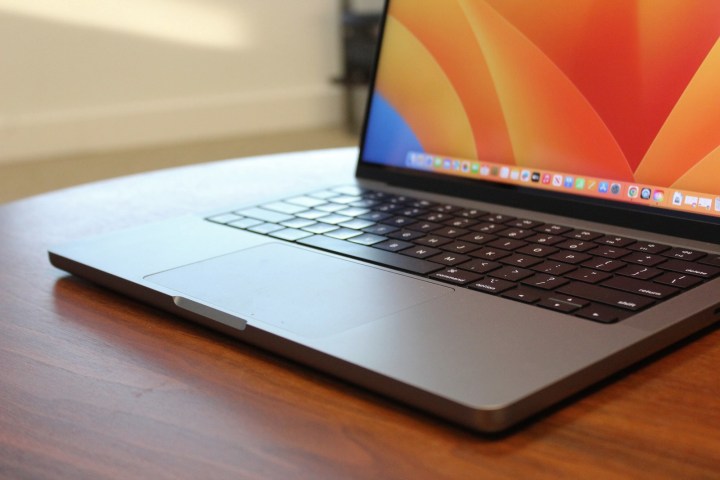
There were no design changes between the M1 and M2 versions of either MacBook Pro. The 14-inch model’s specs now list a fraction of an inch less thickness, but we’re guessing that’s a difference in rounding. Looking at the machines side by side, you certainly won’t notice any difference.
And that’s a good thing, because the MacBook Pros are incredibly well-built laptops with the most solid chassis available, the best attention to detail, the smoothest hinges, and overall the highest level of quality. Nothing needed to be changed in their design, and we’re glad Apple left well enough alone.
Physical connectivity remains improved over earlier models, with plenty of Thunderbolt 4 ports, an HDMI port that can now handle an 8K display up to 60Hz, and the MagSafe connection that not only frees up a USB port, but also provides some protection against potential breakage. The M2 models were upgraded to the latest wireless standards — Wi-Fi 6E and Bluetooth 5.2 — so that’s an improvement.
The keyboards and touchpads remain the same, which is to say, the best available on any laptop today. The Magic Keyboard has proven itself as the most consistent and precise keyboard on the market, and nobody comes close to matching the Force Touch touchpad for its natural feel and responsiveness.
Finally, the webcams remain at 1080p and have software optimizations that make them among the best videoconferencing experiences. That, too, is something that didn’t need to change.
Performance
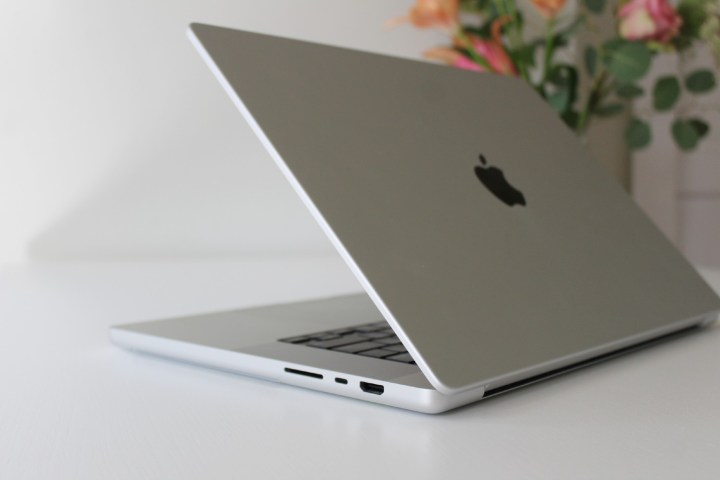
We haven’t tested the MacBook Pro 16, nor all of the various CPU combinations available. However, the M2 Pro and Max both look to be improvements in performance over the M1 models. And given how close the MacBook Pro 14- and 16-inch models performed with the same CPUs, it’s safe to assume that you’ll get roughly the same results when comparing the M2 versions.
There are a few changes, though. First, you can now get both machines with 96GB of RAM as long as you opt for the M2 Max CPU. Previously, the limit was 64GB. In addition, the MacBook Pro 16-inch has a high-performance option that can be selected with the M2 Max CPU installed. Finally, while the 16-inch model starts at the 12-core CPU/19-core GPU M1 Pro, the 14-inch machine offers a 10-core CPU/16-core GPU option.
We did find during our review that the MacBook Pro 14 M2 Max ran hotter than its predecessor. We don’t know if the same holds for the 16-inch model. Overall, though, performance has increased across the board, particularly with beefier new GPUs, and that just builds on the MacBook Pro’s prowess for both demanding productivity workflows and creative tasks.
| Geekbench (single / multi) |
Handbrake (seconds) |
Cinebench R23 (single / multi) |
Pugetbench Premiere Pro |
|
| MacBook Pro 14 M1 (M1 Pro 10/16) |
1,760 / 12,307 | 99 | 1,624 / 12,235 | 911 |
| MacBook Pro 14 M2 (M2 Max 10/38) |
1,973 / 14,596 | 85 | 1,608 / 14,789 | 1,093 |
| MacBook Pro 16 (M1 Pro 10/16) |
1,773 / 12,605 | 95 | 1,531 / 12,343 | 828 |
Display
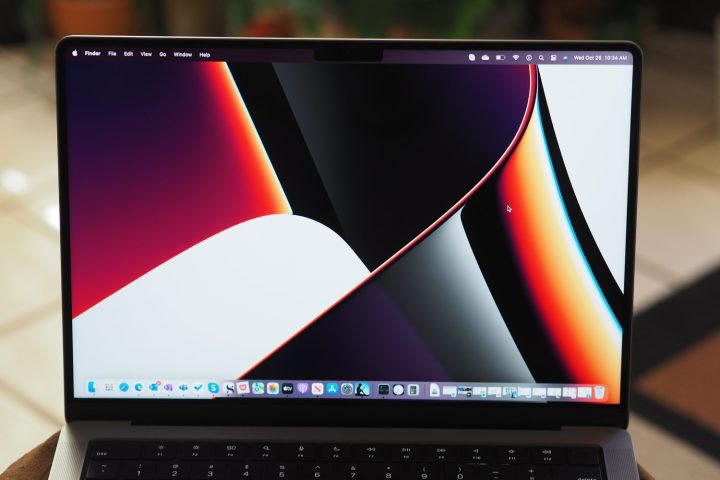
The displays didn’t change with the upgrade to the M2 CPUs. Again, that’s a good thing, because the displays were already excellent. Based on mini-LED technology, the Liquid Retina XDR panels offer incredible levels of brightness that make a huge difference in high dynamic range (HDR) content, as well as when working in brighter environments. Colors are wide (although not quite as wide as OLED) and accurate, and contrast shares OLED’s inky blacks.
The screen sizes and resolutions remain the same, meaning both machines offer incredible sharpness that’s great for reading text and viewing images and videos. The MacBook Pro M2 models retain two of the best displays in laptops today.
Portability
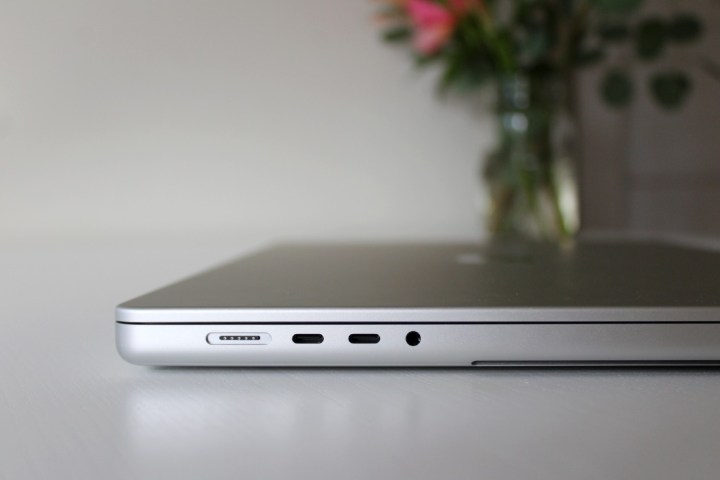
Both laptops retained the same dimensions and weights with the transition to the M2, meaning they’re neither the smallest nor the lightest
According to Apple, battery life has improved slightly in the M2 models, with the MacBook Pro 14 M1 promising up to 17 hours and the 16-inch up to 21 hours, while the M2 models predict an hour longer in each case. We haven’t tested equivalent machines, so we’ll have to take Apple’s word for it. The M1 models were already some of the longest-lasting laptops we’ve tested, so even if the new models are merely equal, we’d be more than satisfied.
Power users should upgrade, and new buyers should opt for the M2
If you already own an M1 MacBook Pro 14 or 16 and aren’t a power user, then there’s no good reason to upgrade if it’s going to cost a considerable amount to do so. Yes, the M2 MacBook Pros are faster, but that matters little if the M1 you already own is fast enough. Power users, though, particularly those who make more money the less time they spend churning through creativity products, might want to consider giving the new machines a look, especially if you can resell your old model.
If you’re just now buying a MacBook Pro and can find an M1 model at an attractive price, then the same caveats apply. If you’re not a power user, then depending on the price difference, there may not be enough to induce you to spend more on the newer machine. But if you’re someone who can use that extra performance, then you should be all-in on the M2 MacBook Pro.
Editors' Recommendations
- Best laptop deals: Save on the Dell XPS 14, MacBook Pro 16 and more
- Best Apple deals: Save on AirPods, Apple Watch, iPad, MacBook
- iPad Pro M4 vs. MacBook Air M3: a harder choice than ever
- Here’s everything we know about the M4 MacBook Pro so far
- This 13-inch MacBook Air deal cuts the price by $150


